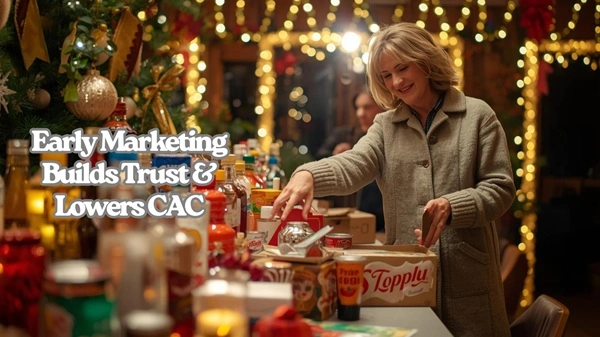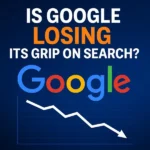Festive seasons in India be it Diwali, Navratri, Christmas, Raksha Bandhan or Eid, are more than cultural celebrations. They’re also the biggest sales opportunities of the year for D2C Brands as well as Consumers. Shoppers are actively seeking new products, offers and experiences and this makes the period a goldmine for brands.
But for D2C (Direct-to-Consumer) brands, the festive season is not just about putting out discounts or last-minute ads. Competing head-to-head with e-commerce giants like Amazon, Flipkart, Meesho or Reliance’s platforms may not be realistic, especially in terms of ad spend and visibility. Instead, smart planning, starting at least a month in advance, can help small and mid-sized D2C brands not only capture attention but also build long-term trust.
In this blog, I’ll break down why early planning is critical for D2C festive season marketing, how it reduces Customer Acquisition Cost (CAC) and how it helps brands gain visibility on e-commerce and quick-commerce platforms.

Why Early Planning for Festive Season Marketing for D2C Brands is Important
1. Festive Season = High Competition + Higher Ad Costs
During the festive season, every brand be it big or small, jumps into the advertising pool both online and offline. As a result:
- Ad spends skyrocket: Cost-per-click (CPC) and cost-per-impression (CPM) nearly double during these months. Competing with Amazon or Flipkart in this space is like bidding against billion-dollar budgets.
- Customer attention is fragmented: Consumers are bombarded with ads across platforms, from OTTs to Instagram reels to Google search. A small D2C brand may get lost in this clutter if they start late.
This is why beginning your marketing a month prior is crucial. Running campaigns early means you’re not directly clashing with mega ad budgets. Instead, you’re building visibility and brand recall before the festive rush truly begins.
2. Competing With Big Brands During Festive Weeks is a Trap
Let’s accept it: platforms like Amazon, Flipkart, Meesho, Myntra, Ajio and others dominate festive sales with mega offers, discounts, and exclusive launches. Even quick commerce players like Zepto, Blinkit and Swiggy Instamart are rolling out festive hampers and rapid-delivery gifting options.
For a D2C brand, trying to compete directly during the festive week can:
- Drain ad budgets within days.
- Deliver poor ROI because customers are conditioned to expect 50–70% discounts from big platforms.
- Reduce trust, since buyers often assume smaller brands cannot match the reliability of established giants.
Instead of going head-to-head, D2C players should leverage these platforms strategically:
- Focus on building your own brand identity before the festive week.
- Use festive weeks to piggyback on e-commerce traffic by ensuring your products are visible on Amazon, Flipkart or Blinkit.
- Position your own website campaigns as brand-first and story-driven, rather than just discount-driven.
3. Why Early Marketing Builds Trust & Lowers CAC
One of the biggest challenges for D2C brands is the high cost of acquiring new customers (CAC). Festive seasons amplify this problem because of competitive bidding.
By starting early, you achieve three key benefits:
a) Build Search Momentum
If you start promoting your products in September for Diwali in October–November, consumers will begin searching for your brand or category on Google and Amazon. This helps you gain organic visibility on marketplaces when the actual sale rush begins.
For example:
- A skincare brand starting campaigns in September builds recognition.
- By the time Diwali arrives, users searching for “festive skincare gift sets” on Amazon are more likely to encounter the brand, since prior searches push it higher in rankings.
b) Warm Up Audiences
Consumers don’t always buy on the first touchpoint. Studies show it takes 4-5 interactions before a buyer makes a decision. Starting early allows you to:
- Run awareness ads.
- Collect leads via festive previews.
- Retarget interested customers during the actual sale.
This reduces reliance on cold ads during the peak season, cutting down CAC significantly.
c) Trust Before Discounts
Festive seasons are not just about pricing. People are looking for authentic stories, unique gifts and meaningful purchases. By starting campaigns early, brands can highlight:
- Product quality.
- Sustainability.
- Unique packaging.
- Customer reviews.
This creates trust equity so that when discounts do appear, customers already believe in the brand.
4. Using Festive Weeks for E-Commerce Visibility
If you’ve already built awareness, the actual festive weeks can be used differently:
- On E-commerce Platforms: Customers are actively searching for products on Amazon, Flipkart, Nykaa or Zepto. Instead of burning your budget on Meta or Google ads, invest in platform ads that ensure your brand shows up in searches.
- Quick Commerce Tie-Ups: Many customers want last-minute gifts. Partnering with quick-commerce platforms ensures visibility and solves urgency-based demand.
- Product Bundles: Festive hampers, gift packs, or limited editions sell better during peak weeks. These can be marketed via e-commerce promotions while your D2C site continues to build the brand story.
This two-pronged approach ensures you’re not trying to fight giants with pure discounts but instead positioning yourself smartly across channels.
5. The CAC Advantage of Early Marketing
Let’s break down how early planning directly impacts CAC:
- Starting Early (Pre-Festive):
- Lower CPC due to less competition
- Time to build retargeting lists
- Ability to test creatives and audiences before scaling
- Peak Festive (E-commerce Focus):
- Reduced need for fresh awareness ads
- Better conversions since audiences are already primed
- Platform-specific ads (Amazon Sponsored Ads, Flipkart Smart Ads) have better ROI when customers are in buying mode
This combination creates a funnel that lowers CAC, because you’re not relying on high-cost cold acquisition during the festive peak.
6. How Early Marketing Boosts Search Visibility
Search engines and e-commerce platforms reward consistency and relevance. Starting early improves:
- SEO Rankings: Blog posts, festive landing pages, and category pages that are optimized early start ranking when search queries spike.
- Marketplace Rankings: Amazon’s algorithm rewards products with higher searches and clicks. If your audience is already looking for your brand, your product gets pushed higher in organic results.
- Social Proof: Early customers generate reviews and user-generated content (UGC), which further builds visibility during the festive week.
For instance, a D2C jewellery brand that runs “Festive Gifting Guide” ads and blogs in September can secure strong SEO positions by October, just in time for Diwali shoppers.
7. Practical Steps for D2C Brands
Here’s a roadmap for how D2C brands can execute festive season planning effectively:
Step 1: Start 45–60 Days Early
- Launch teasers, festive collections, or “coming soon” campaigns
- Build SEO content around festive keywords (“best Diwali gifts under ₹1000,” “eco-friendly rakhi gifts”)
Step 2: Focus on Brand Storytelling
- Use social media, reels and influencer collaborations to highlight why your brand is unique
- Showcase behind-the-scenes, packaging or founder stories
Step 3: Warm Up Audiences
- Run awareness ads with low budgets
- Collect emails via festive previews or early bird offers
Step 4: Optimize Marketplaces
- Ensure your Amazon, Flipkart or Nykaa product listings are SEO-friendly with high-quality images
- Collect reviews from early buyers
Step 5: Shift Spend During Festive Weeks
- Reduce external ads
- Focus budgets on marketplace ads and quick commerce tie-ups
- Retarget your warmed-up audiences with compelling festive offers
8. The Long-Term Brand Play
Festive season marketing should not just be about short-term spikes. For D2C brands, the real win is building trust and recall. Starting early means customers will:
- Recognize your brand next year too
- Associate you with festive gifting
- Trust your product quality based on early communication rather than rushed discounts
This is how small D2C brands can slowly carve their space without burning out in the battle against e-commerce giants.
Conclusion
For D2C brands, festive season sales are both an opportunity and a challenge. Jumping in at the last minute with discounts and ads will almost always lead to high costs and poor ROI, especially when competing with giants like Amazon, Flipkart or Reliance.
The smarter path is to start early—at least a month in advance. Use this time to build awareness, trust, and brand equity. By the time the festive rush begins, shift focus to e-commerce visibility, quick commerce tie-ups, and retargeting audiences.
This hybrid approach ensures lower CAC, higher trust, and stronger long-term positioning for your D2C brand.
Festive seasons are not just about sales. They’re about building an emotional connection with your audience—and the only way to do that is to plan ahead, not rush in at the last moment.

Hi, I’m Prashant Jain — a curious soul, storyteller, and content creator at heart.I’ve always been drawn to the world of entertainment, travel, sports, health & lifestyle — not just as a writer, but as someone who genuinely lives these experiences. Whether I’m binge-watching the latest OTT series, exploring offbeat spiritual destinations in India, or diving deep into wellness routines and cricket match insights, I love sharing what I discover with like-minded readers.
PopNewsBlend is my way of blending personal journeys with meaningful stories — ones that inform, inspire, and keep you ahead of the curve. Everything I write comes from real observations, hands-on experiences, and a deep passion for understanding the world around us.
Discover more from Popnewsblend
Subscribe to get the latest posts sent to your email.






